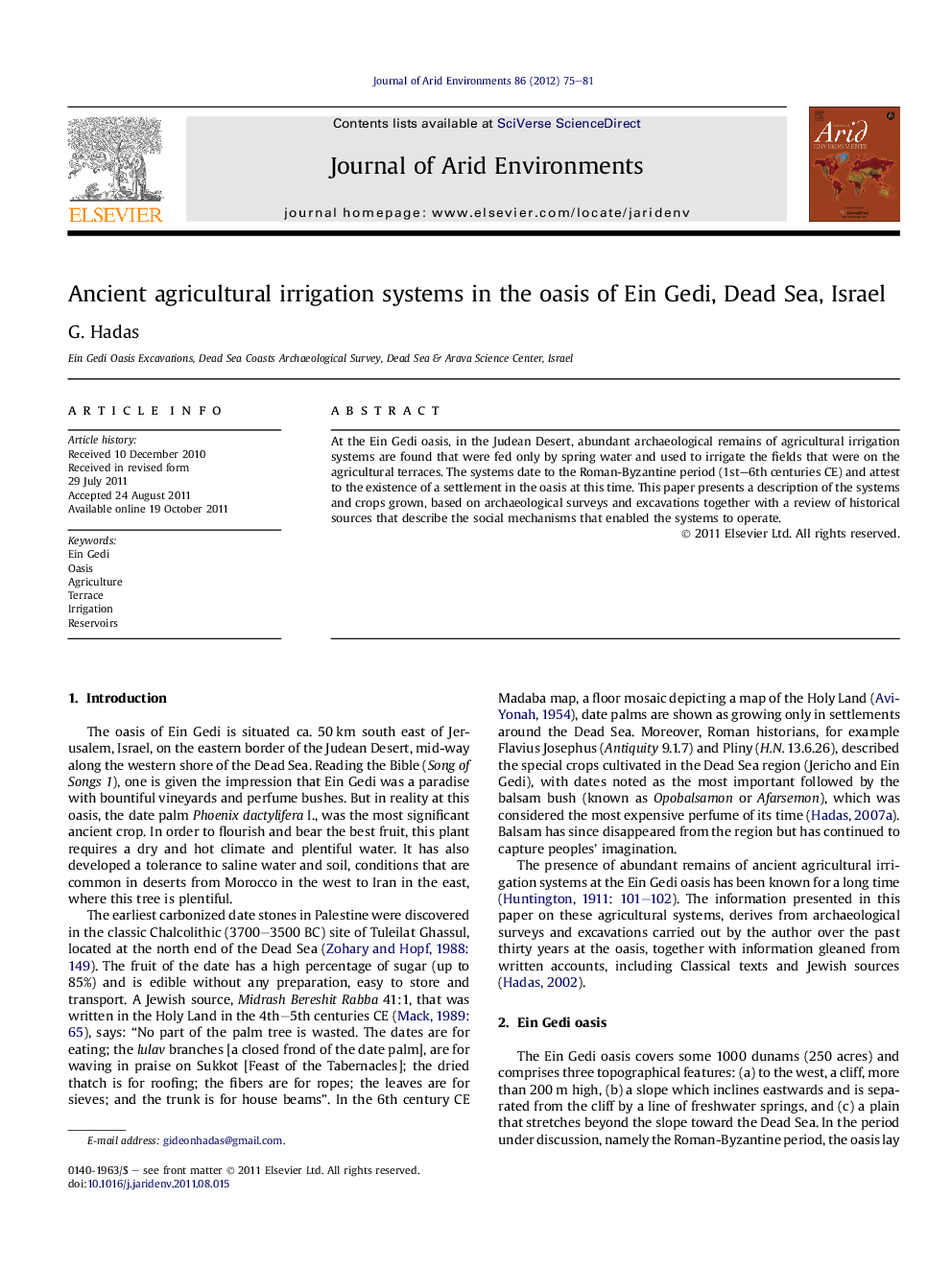| Article ID | Journal | Published Year | Pages | File Type |
|---|---|---|---|---|
| 4393248 | Journal of Arid Environments | 2012 | 7 Pages |
At the Ein Gedi oasis, in the Judean Desert, abundant archaeological remains of agricultural irrigation systems are found that were fed only by spring water and used to irrigate the fields that were on the agricultural terraces. The systems date to the Roman-Byzantine period (1st–6th centuries CE) and attest to the existence of a settlement in the oasis at this time. This paper presents a description of the systems and crops grown, based on archaeological surveys and excavations together with a review of historical sources that describe the social mechanisms that enabled the systems to operate.
► Agricultural irrigation systems enabled farmers in the oasis to make a living in desert region. ► Archaeological excavations in the irrigation systems revealed date, crops and building technology. ► Water control and water rights that take care of the construction, maintenance of the water systems and water distribution.
